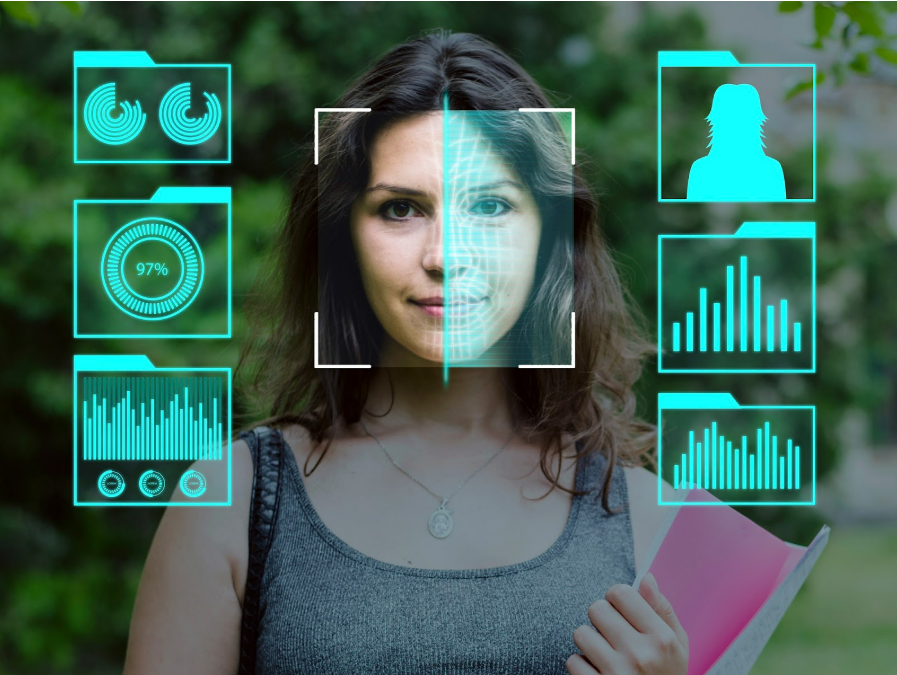It’s necessary to understand FREHF, a groundbreaking approach designed to enhance your interaction with technology. By prioritizing human needs and preferences, FREHF aims to create systems that are not only efficient but also intuitive and accessible. In this post, you’ll discover how this innovative framework can transform your daily experiences and reshape the technological landscape for a more user-centered future.
Key Takeaways:
- FREHF emphasizes user-centric design, prioritizing ease of use and accessibility for diverse populations.
- Integration of ethical AI practices ensures technology is developed with human values at the forefront.
- Focus on sustainability promotes eco-friendly production and lifecycle management in technology development.
What is FREHF?

Definition and Overview
FREHF, or Human-Friendly Technology Framework, embodies a set of guidelines designed to create technologies that prioritize user experience and well-being. Essentially, it seeks to bridge the gap between advanced technological capabilities and genuine human needs, ensuring that your interaction with technology is seamless, beneficial, and supportive of your daily life.
Key Principles of FREHF
At the core of FREHF are several guiding principles: user-centric design, accessibility, transparency, and adaptability. These principles ensure that technology evolves in ways that resonate with your preferences and lifestyles, paving the way for innovations that cater specifically to human needs.
Focusing on user-centric design, FREHF emphasizes the importance of tailoring experiences based on individual behavior and preferences, utilizing data analytics for personalization. Accessibility is prioritized, making sure that technology is usable by everyone, regardless of ability or experience. Transparency ensures that you understand how your data is used, fostering trust in technological interactions. Lastly, adaptability signifies that technology should evolve with your needs over time, allowing you to transition smoothly through various life stages and challenges. These principles collectively empower you to harness technology in ways that genuinely enhance your quality of life.
The Importance of Human-Friendly Technology
Your interaction with technology affects your daily life significantly, making human-friendly tech necessary. By prioritizing user-centric design, these technologies foster accessibility, inclusivity, and overall well-being. They are tailored to meet your needs, improving both productivity and satisfaction. As technology evolves, ensuring that it remains approachable and supportive is necessary for maximizing its benefits.
Enhancing User Experience
When technology is designed with you in mind, it simplifies tasks and reduces frustration. User-friendly interfaces, intuitive navigation, and seamless integration create a positive experience, making you more likely to engage with the tools available. Enhanced experience leads to increased productivity, allowing you to focus on what matters most without the hassle of technical difficulties.
Bridging the Digital Divide
Human-friendly technology plays a vital role in reducing the gap between those with easy access to digital tools and those without. By emphasizing usability for all skill levels, it ensures that everyone, regardless of their background, can leverage the benefits of technology. This democratization of access empowers you to be part of the digital world, contributing to social and economic advancements.
Bridging the digital divide extends beyond just providing access; it involves creating platforms that cater to diverse abilities and experiences. For instance, tools with multilingual support and alternatives for differing physical abilities can significantly enhance inclusivity. In the United States, studies show that nearly 15% of households lack high-speed internet access, underscoring the need for human-friendly solutions that enable connectivity. Ensuring that you have the necessary resources to access technology not only uplifts your personal growth but also furthers community development and economic opportunity.
Technological Innovations Supporting FREHF
FREHF thrives on pioneering technologies that promote user-friendly experiences, enhancing interactions and fostering inclusivity. Innovations such as AI, machine learning, and user-centric design drive this movement, ensuring technology adapts to human needs rather than the other way around. These advancements not only simplify processes but also empower users, creating a seamless and intuitive engagement with technology in everyday contexts.
AI and Machine Learning
AI and machine learning play a vital role in FREHF by enabling smart systems that analyze user behavior and preferences. This adaptive technology personalizes your interactions, anticipating your needs and providing insights tailored to your context, thus making technology more effective and less intrusive. Real-time data processing ensures that your experience is continually refined, reducing friction and enhancing satisfaction.
User-Centric Design
User-centric design prioritizes your experiences, focusing on usability and accessibility to create intuitive systems. By considering your needs and feedback during the design process, technologies become more relatable and easier to navigate, improving overall satisfaction and engagement. This approach transforms complex systems into approachable tools that enhance your productivity and enjoyment.
Effective user-centric design entails ongoing research and testing, ensuring applications reflect your preferences and real-world challenges. Techniques like user testing, surveys, and feedback loops are employed to gather insights directly from you, allowing designers to make informed adjustments.
With a focus on accessibility, interfaces are crafted to support diverse abilities, ensuring that every user can benefit without barriers. By fostering this inclusive environment, technology becomes not just functional but also genuinely empowering, enhancing the pace at which you can achieve your goals.
Case Studies in FREHF Implementation

Real-world implementations of FREHF provide valuable insights into how these principles enhance user experience, accessibility, and ethical use of technology across various sectors. Each case study showcases quantifiable outcomes and user feedback that highlight the framework’s effectiveness in fostering human-friendly technology.
- Healthcare App: A major healthcare provider reported a 30% increase in patient engagement after redesigning their app using FREHF principles, resulting in improved health outcomes.
- Educational Platform: An online learning platform saw a 25% boost in completion rates by integrating user-centered design methods that cater to diverse learning needs.
- Financial Services: A banking app redesign led to a 50% reduction in customer support inquiries as users found interfaces more intuitive, enhancing overall satisfaction.
- Smart Home Devices: Implementing FREHF in smart home technology resulted in a 40% increase in adoption among seniors, addressing key usability challenges.
Successful Applications
Several organizations have successfully implemented FREHF, demonstrating profound improvements in user interaction and satisfaction. For instance, the healthcare app redesign enhanced engagement among users who previously struggled with navigation, while the educational platform’s user-centric methods resulted in higher completion rates. These outcomes illustrate the practical benefits of adopting a human-friendly technology approach.
Lessons Learned
While implementing FREHF, organizations identified key lessons that can inform future applications. Notably, ongoing user feedback loops proved important for refining designs, ensuring that technology adapts to user needs over time. Additionally, fostering cross-disciplinary collaboration among designers, developers, and end-users was vital in creating effective solutions.
The emphasis on user feedback made it clear that continuously gathering insights from actual users allows for timely revisions and enhancements. Organizations that engaged directly with their users during the development phase reported smoother transitions to new systems and higher overall satisfaction post-launch.
Furthermore, including diverse perspectives in the design process resulted in solutions that truly resonated with varied demographics, reinforcing FREHF’s commitment to inclusivity. This iterative approach not only optimized usability but also built trust and loyalty among users, leading to sustained engagement and application success in the long term.
Challenges in Adopting FREHF
Adopting FREHF presents a range of challenges that organizations must navigate to leverage its full potential. These challenges encompass technological barriers and ethical considerations that require thoughtful strategies and solutions to ensure successful implementation.
Technological Barriers
Technological barriers often hinder the integration of FREHF practices in your organization. Legacy systems, for instance, may not support new human-friendly features, necessitating significant upgrades or replacements. Moreover, there can be issues related to data interoperability, making it challenging to create seamless user experiences across various platforms.
Ethical Considerations
Ethical considerations in adopting FREHF are paramount. Organizations must grapple with data privacy concerns, ensuring that user information is protected amid evolving technologies. Balancing user convenience with ethical data usage becomes a critical focus, as improper handling could lead to user distrust and backlash.
Additionally, ethical concerns extend to algorithmic biases, which can adversely affect user experience by disproportionately benefiting certain demographics over others. You must ensure that your FREHF implementations account for fairness and inclusivity, making deliberate choices in technology development and deployment.
Engaging diverse stakeholders and conducting regular audits can help uncover and mitigate these biases, reinforcing user trust and commitment to human-friendly design practices.
The Future of Human-Friendly Technology
Your experience with technology is set to evolve dramatically as human-friendly principles gain traction. Companies are prioritizing intuitive design and ethical considerations, ensuring products enhance your daily life rather than complicate it. Innovations in AI, user-centered design, and accessibility will lead to smarter, more adaptive technologies that cater to your specific needs, ultimately fostering a more seamless interaction between you and the devices you rely on.
Emerging Trends
Emerging trends in human-friendly technology showcase an exciting landscape driven by personalization and inclusivity. You’ll notice a shift toward adaptive interfaces that learn from your behaviors, making interactions smoother.
Voice and gesture recognition technologies are becoming more refined, allowing for hands-free control that suits varying environments. Additionally, advancements in ethical AI are reinforcing the importance of transparency and user consent, ensuring that your data is respected and protected.
Potential Impact on Society
The societal impact of human-friendly technology is profound, as it fosters greater inclusivity and accessibility for all individuals. By addressing the diverse needs of users, technology can bridge gaps in education, healthcare, and communication, creating a more equitable society. You’ll see improved quality of life through tools that empower individuals with disabilities, as well as educational platforms that adapt to varied learning styles, providing everyone with the opportunity to thrive.
As human-friendly technology continues to shape societal norms, you can expect a more engaged populace. Tools designed with inclusivity in mind help dismantle barriers that previously limited access to necessary services. For example, AI-driven educational platforms can cater to varied learning styles and abilities, ensuring that every student receives tailored support.
Likewise, advancements in telehealth and online services provide access to medical support for individuals in remote areas, enhancing overall community well-being. The ripple effect of these technologies fosters stronger social connections, ultimately nurturing a more informed and participatory society.
FAQ
Q: What is FREHF technology?
A: FREHF (Future of Human-Friendly Technology) refers to innovative technologies designed to enhance human experiences while prioritizing accessibility, usability, and ethical considerations. It aims to align technological advancements with human values and needs.
Q: How does FREHF impact daily life?
A: FREHF improves daily life by making technology more intuitive and user-centric. It enhances communication, streamlines tasks, and fosters better connections among individuals, resulting in a more interconnected and efficient society.
Q: What sectors can benefit from FREHF?
A: FREHF can benefit various sectors, including education, healthcare, and business. In education, it personalizes learning experiences; in healthcare, it improves patient interactions; and in business, it fosters better teamwork and productivity through user-friendly solutions.
Final Words
Upon reflecting, you can see that FREHF represents a transformative shift towards technology that prioritizes your needs and wellbeing. As you embrace this powerful future, you will experience a more intuitive interaction with technology, fostering productivity and enhancing your quality of life.
By understanding and implementing FREHF principles, you ensure that innovation aligns with human values, empowering you to navigate the digital landscape with confidence and ease. Your engagement with human-friendly technology can shape a more sustainable and equitable world for all.





